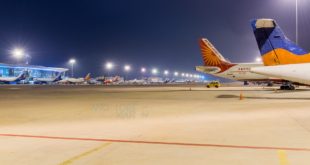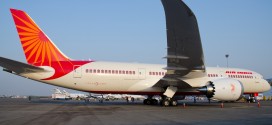Continuing our series of major scheduled civil aviation accidents with fatalities in the 100 years of Indian civil aviation. Yesterday we covered till the year 1952, today we continue forward till 1957.
The early 1950’s were a torrid time for Indian aviation from a safety perspective, and 1953 continued the high rates of accidents in India. The war surplus Douglas DC3/C-47 Dakota continued to remain the main stay of the civil aviation fleet as well as the crashes. The newly created Indian Airlines Corporation which was formed in 1953, by nationalising seven private airlines, inherited a fleet of 99 aircraft including 74 Douglas DC-3 Dakotas, 12 Vickers Vikings, 3 Douglas DC-4s and various smaller types from the seven airlines that made it up. However, 1953 also saw the first crash of a jetliner in India.
On March 14, 1953, a Convair CV-240 AP-AEG of Orient Airways with 11 passengers and 5 crew, on a flight from New Delhi Safdarjang to Dhaka, East Pakistan, crashed in to mountain after the pilot descended in poor visibility to determine his location visually. All aboard died.
On April 14, 1953, a cargo Douglas DC3/C-47 Dakota VT-AUG of Airways India with 3 crew, disintegrated mid-air in the Khasi hills of Meghalaya on a flight from Guwahati to Calcutta. Structural failure was suspected. All aboard died.
Just a fortnight later, on May 2, 1953, about 16:30 (4:30pm) India witnessed the first crash of a jetliner, when a De Havilland DH-106 Comet-1 G-ALVY of British Overseas Airways Corporation (which subsequently became British Airways) with 37 passengers and 6 crew, burst in to flames soon after take-off from Calcutta Dum Dum on a flight to New Delhi. Structural failure was suspected. All aboard died.
In immediate succession, on May 9, 1953, a Douglas DC3/C-47 Dakota VT-AUD of Air India with 13 passengers and 5 crew crashed just five minutes after take-off from Delhi Safdarjang airport bound for Ahmedabad. The cause is suspected to have been caused by an in-experienced pilot who over-banked the aircraft in to a turn and flew it in to the ground. All aboard died.
On December 12, 1953, a Douglas DC3/C-47 Dakota VT-CHF of the newly created Indian Airlines with 10 passengers and 4 crew crashed soon after take-off from Nagpur, in very similar circumstances to the Delhi crash. A false engine fire indication panicked the flight crew who over-banked the aircraft at too low a speed and too low an altitude in their haste to return to the airport and flew the aircraft into the ground. Only one person, a crew member, survived the crash.
1954, began on an ironical note. On February 25, 1954, in an attempt to understand the reasons behind the Nagpur crash, Indian Airlines attempted a test flight to re-create the incident using one of its Douglas DC3/C-47 Dakota VT-ATU near Delhi with 3 crew on-board. During the test flight, this aircraft too crashed, killing all aboard.
On April 30, 1954, a Douglas DC3/C-47 Dakota VT-DEM of Darbhanga Aviation with 8 passengers and 3 crew crashed soon after take-off from Calcutta, when its left engine caught fire and the plane stalled. Two passengers and all three crew perished.
On January 21, 1955, a cargo Douglas DC3/C-47 Dakota VT-COZ of Indian Airlines with 3 crew had a CFIT (controlled flight into terrain) crash while approaching Guwahati airport during foggy conditions. No one survived.
On February 2, 1955, a Douglas DC3/C-47 Dakota VT-CVB of Indian Airlines with 6 passengers and 4 crew crashed soon after take-off from Nagpur at around 04:00 (4am). Again the flight crew was blamed for over-banking the aircraft causing it to fly into the ground. All aboard were killed.
On April 11, 1955, Air India had its first experience with terrorism. Its Lockheed L-749A Constellation registration VT-DEP and named Kashmir Princess 11 passengers and 8 crew was the victim of a time-bomb near the Natuna islands in the south China sea, on a flight from Hong Kong Kai Tak airport to Jakarta, Indonesia. The target of the assassination was the Chinese Premier, Zhou Enlai, who changed his travel plans at the last moment and was not on-board. Only 3 crew members survived the crash. All passengers mainly journalists, to the Asia-Afro Bandung Conference perished. The captain of the plane, D.K. Jatar who perished in the crash, later along with Co-Captain M.C Dixit and flight engineer Anant Karnik, became the first civilians to be awarded the Ashoka Chakra for “most conspicuous bravery, daring and self-sacrifice”.
On March 21, 1956, a Douglas DC3/C-47 Dakota VT-CGN of Indian Airlines with 18 passengers and 3 crew crashed while landing at Tezpur, in the North East. Two passengers were killed and the aircraft hull was written-off.
On March 31, 1956, a cargo Douglas DC3/C-47 Dakota VT-DCM of National Air Operators with 3 crew crashed about 30 miles from Bagdogra. An overloaded aircraft flying in to turbulent weather was the suspect cause. All aboard were killed.
On May 15, 1956, a Douglas DC3/C-47 Dakota VT-DBA of Indian Airlines with 30 passengers and 3 crew over-ran the runway at Kathmandu, Nepal. 14 passengers and one person on the ground were killed. This was the first crash of the domestic carrier in a foreign country.
On October 19, 1956, a cargo Douglas DC3/C-47 Dakota VT-DGK of Indian Airlines with 3 crew crashed while repeatedly attempting to land in poor visibility at Agartala. All aboard were killed.
On March 13, 1957, a Douglas DC3/C-47 Dakota VT-CFB of Indian Airlines with 2 crew crashed at Kingsway camp near Delhi during a training flight for a captain. Both crew and 3 persons on the ground died.
On May 15, 1957, a cargo Douglas DC3/C-47 Dakota VT-AUV of Indian Airlines with 3 crew crashed soon after taking off from Silchar in a severe thunderstorm. One crew member perished.
On August 20, 1957, a cargo Douglas DC3/C-53 VT-ARH of Indamer with 8 crew stalled and crashed in to mountains while dropping relief supplies in Assam. All members were killed.
On September 1, 1957, the first case of a two aircraft collision occurred in India, when a Handley Page HP.81 Hermes G-AKFP of Airwork Ltd., with 58 passengers and 6 crew on a special flight from the United Kingdom to Singapore via Delhi and Calcutta, landed on the wrong runway at Calcutta Dum Dum, and crashed in to a cargo Douglas DC3/C-47 Dakota VT-AUA of Indian Airlines with 4 crew. All aboard the Hermes survived while the 4 crew aboard the Dakota died. The captain of the Hermes was found responsible for the accident. Both aircraft were written-off.
The saga continues next week.
 Bangalore Aviation News, Reviews, Analysis and opinions of Indian Aviation
Bangalore Aviation News, Reviews, Analysis and opinions of Indian Aviation


